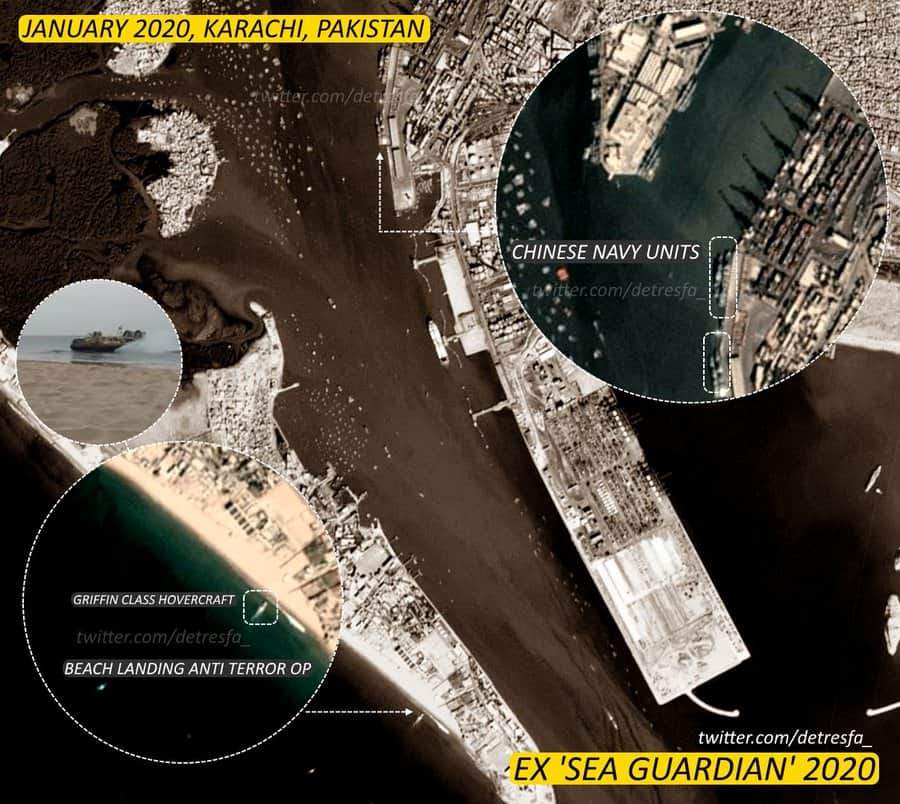Satellite Imagery Shows Chinese Navy In Pakistan

Open-source defense analysts trawl through oceans of publicly available material in search of things of military significance. An eagle eyed watcher recently spotted something interesting in commercial satellite imagery. Twitter user d-atis shared an image analysis showing Chinese forces exercising in Karachi, Pakistan.The satellite captured a Pakistani Navy hovercraft approaching Manora beach. This is a convenient location, right next to a a major Marines base known as PNS Qasim. From other sources we know that the hovercraft was carrying both Pakistani and Chinese marines. The troops ran down the ramp and across the beach side by side, a formation designed for the cameras. In combat conditions the troops would probably not be deployed in this manner.The joint exercise was not just for the cameras however. It underscores the close defense relationship which extends into industry. China is a major arms supplier to Pakistan, and has been helping better establish local shipbuilding.The exercise in question, Sea Guardian 2020, took place in January.
China deployed an air defense destroyer, a frigate and a replenishment ship. The satellite imagery shows that the Chinese ships docked near the container terminal rather than in the Pakistani Navy base.The Chinese destroyer was the Type-052D Luyang-III class ship Yinchuan (175). The 7,500 ton ship carries HHQ-9 long range surface to air missiles and cruise missiles. It has large phased array radars similar to U.S. Navy AEGIS destroyers. The People’s Liberation Army Navy (PLAN) has 8 Type-052Ds and is building more.
The frigate was the Type-054A Jiangkai-II class ship Yuncheng (571). It is armed with a Chinese version of the Russian Buk surface to air missile as well as anti-ship missiles. The PLAN has 30 of these warships.
China also deployed a submarine rescue ship. This may be significant because China is supplying the Pakistani Navy with 8 Type 039B Yuan class submarines. Four of the submarines will be built in China and the other four in Pakistan. Despite a strong tradition in the submarine trade the Pakistani Navy does not have a rescue ship. With their fleet growing from 8 to 16, they may be looking at acquiring this capability. The visit would have given the Pakistani Navy the opportunity to look at the capabilities up close, and possibly exercise with it.
The Pakistani Navy contributed two frigates, two missile boats and several aircraft. The exact details of the exercises, which took place in the Arabian Sea, have not been revealed. It may have involved additional assets.
The defense relationship between China and Pakistan remains strong. These exercises may become more frequent and structured in future. Additionally the deployment gives the PLAN the opportunity to learn the nuances of war fighting in the Arabian Sea. As the PLAN becomes more global in reach this could be a more frequent operating theater.
Photo and Link: https://www.forbes.com/sites/hisutton/2020/04/08/satellite-imagery-shows-chinese-navy-in-pakistan/#c308f583b62d




